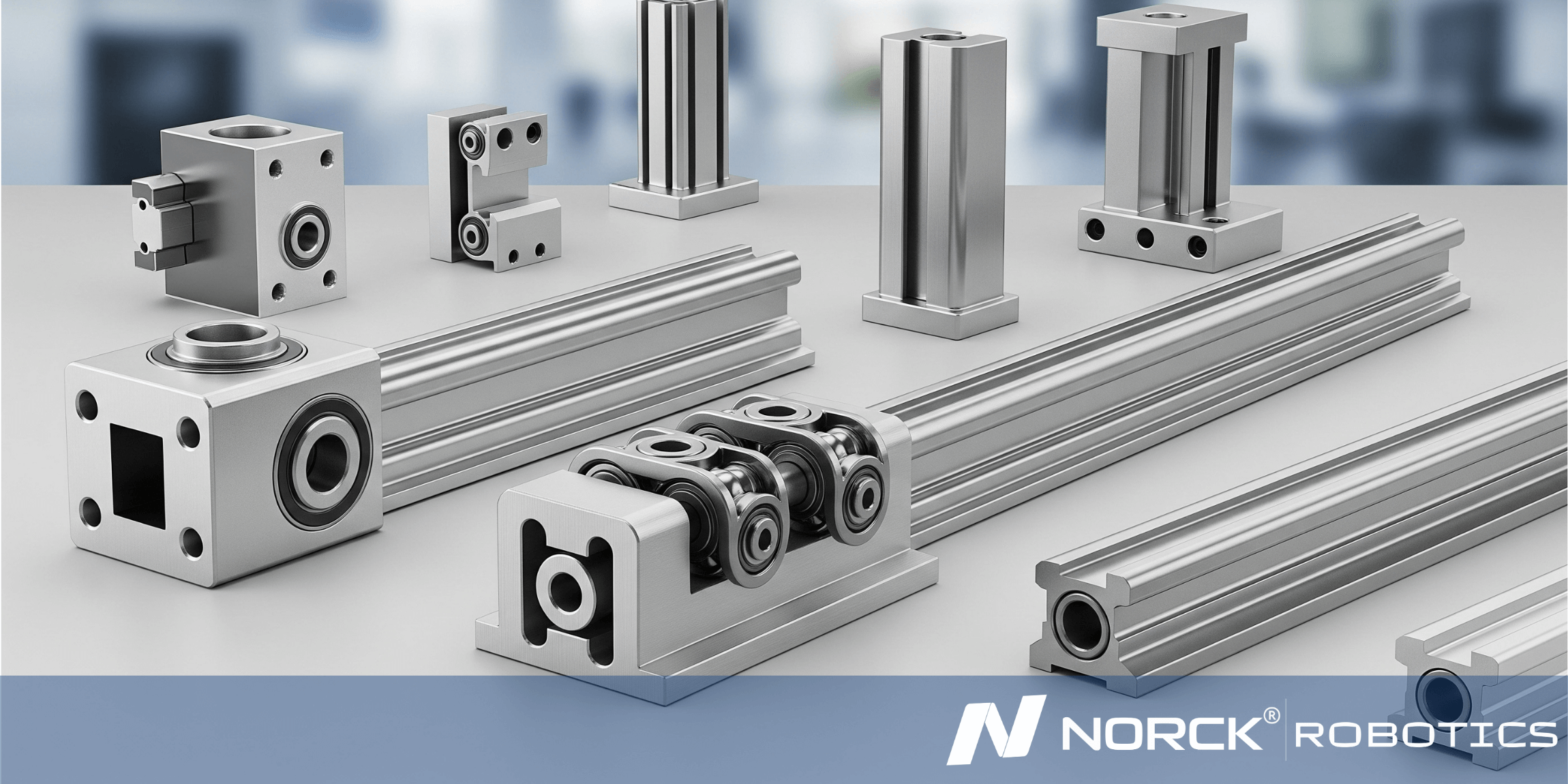

Ready to automate your future? Get a quote from Norck Robotics now!
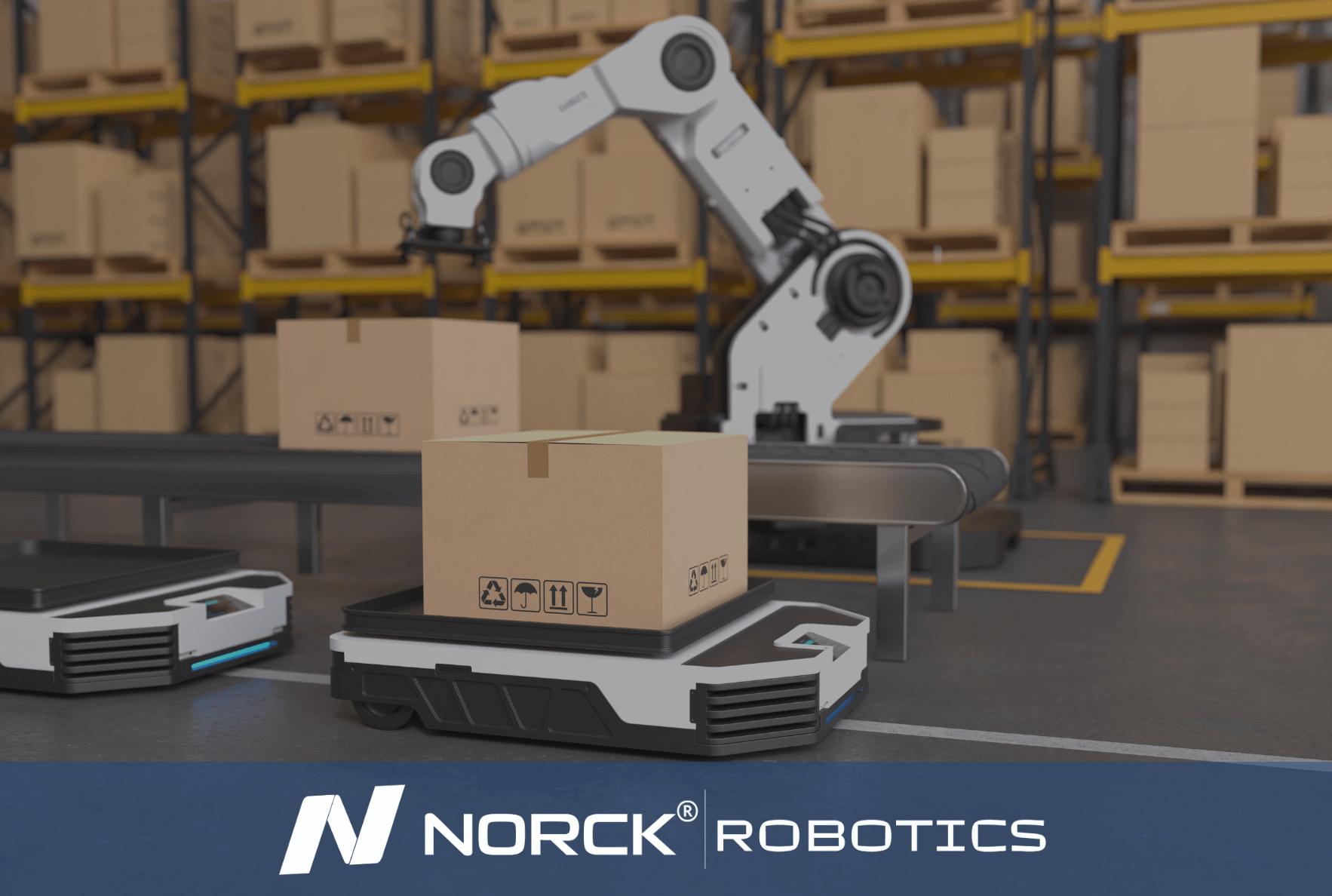
Norck Robotics specializes in providing unique robotic automation and engineering solutions designed to meet the specific operational needs of each client. Our expertise covers a wide range of industries and applications.
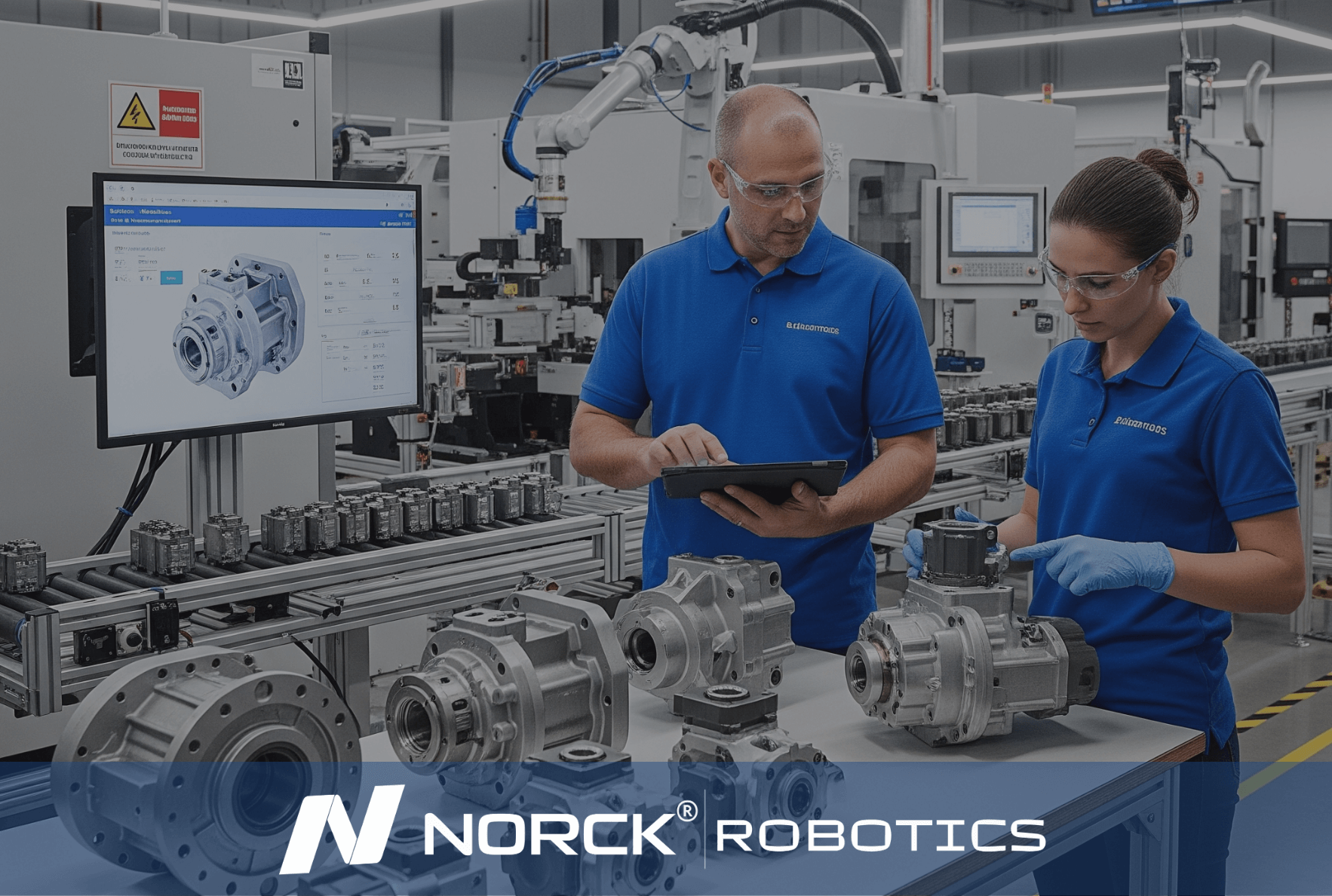
Norck Robotics delivers turnkey robotic automation and engineering solutions tailored to your specific needs across various industries.

Whether you need a single robotic cell prototype or full-scale factory automation, Norck Robotics engineers are ready to collaborate with you to bring your concept to life.
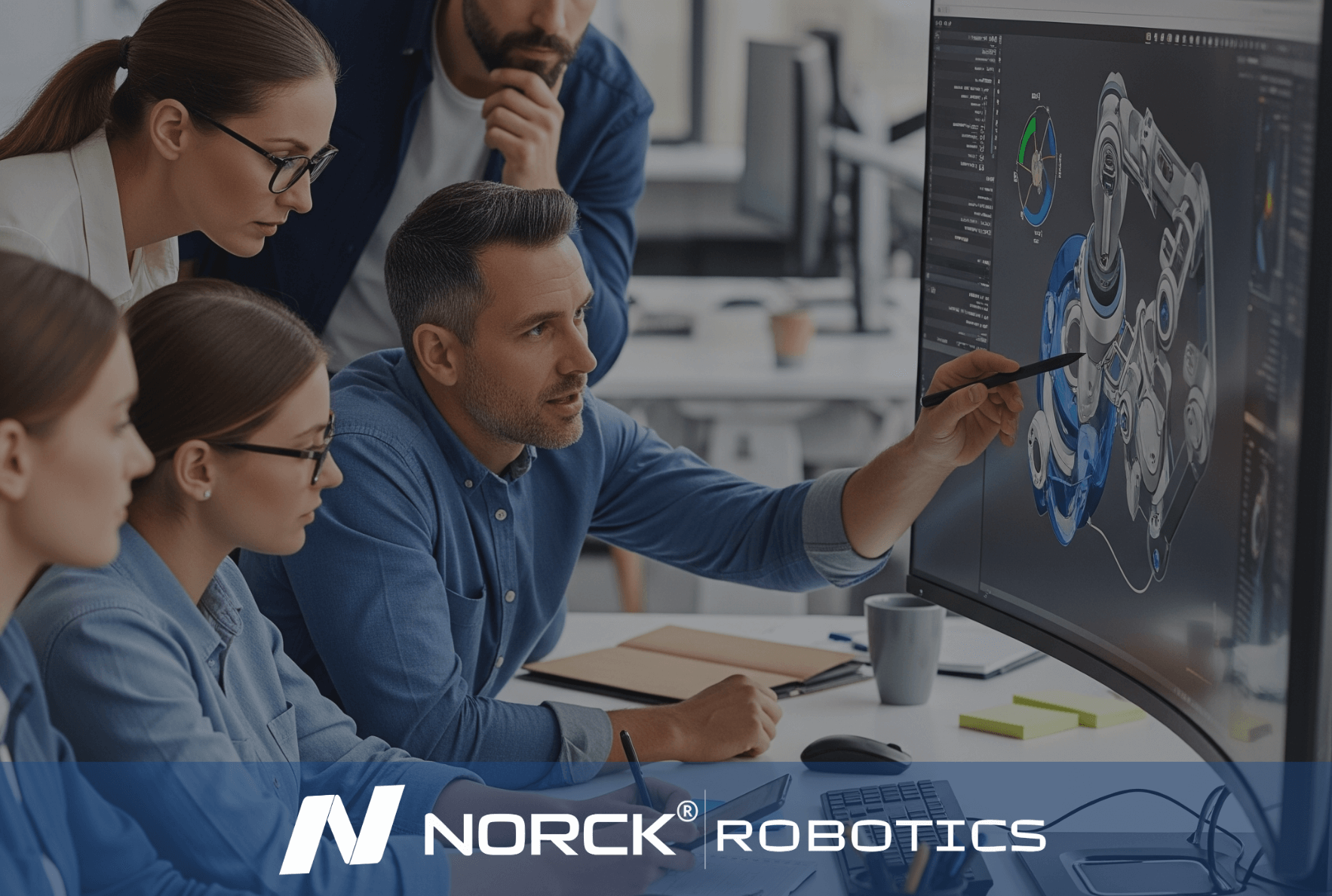
Norck Robotics engineers analyze your existing processes to provide feedback that enhances efficiency, cost-effectiveness, and productivity for robotic integration.
Movement systems typically involve Linear Guides and Rails for smoothly moveable, precise, and highly controllable linear motions. Any performance aspect required of these systems must include the following:
The linear guide and rail designs can perform heavy-duty applications without disregarding functionality. Evenly distributed stress across a well-designed surface manifests stable movement, with the capacity to retain stability over high-stress areas.
By minimizing resistance and friction, linear guides provide smooth motion to increase speed and productivity.
They are intrinsically rigid, capable of maintaining system stability, while operationally high-speed or heavy load.
The essence of Linear Guides and Rails is to provide accurate linear motion by aligning the moving part in an absolutely straight line. Applications requiring such precision differ from CNC machines to 3D printers and to automation systems; therefore, in these systems, anything less than perfect alignment would cause defects.
Linear guides minimize frictional forces so much on any mechanism that the machinery can smoothly slide over with any physical damage inflicted. This prolongs the service life of tools and lowers maintenance cost.
In a nutshell, Linear Guides and Rails are critical in all motion systems that require precision, durability, and efficient functions. They smoothen and yield fatigue-free linear motion. Therefore, they are essential in any modern industrial and automation applications.
The Linear Guides and Rails really do form skeletal parts of motion systems that require high precision with lots of resistance. Here is how they do it:
Linear Guides and Rails utilize recirculating ball rollers or roller bearings between the rail and carriage that are massively effective at rolling. Compared to sliding contact, rolling reduces significantly friction, yielding smooth torque-free movement.
The design of Linear Guides and Rails ensures that the load is distributed evenly over the contact surfaces. This reduces localized wear and maintains stability along distance, which is crucial for accuracy.
They are machined with very tight tolerances and well finishes; thus, there is a minimum play between the components, suchilt acknowledged in its consistent alignment for accurate linearity.
Many modern ones come with built-in lubrication units that keep friction low over a long period without needing constant maintenance.
Such guides are purposely shaped so that deviation or side movement will not work so that the carriage would trace out a perfect linear path.
With the addition of all the innovative elements, Linear Guides and Rails combined make provision for effective low-friction traveling and highly accurate position control that is optimally suited for automation, robotics, and precision machinery.

In addition to its own expert engineering team, Norck Robotics provides access to a network of hundreds of top-tier system integrators, robot manufacturers, and component suppliers across the United States, Germany, and Europe.

Working with Norck Robotics reduces dependency on manual labor, increases production consistency, and secures your operations against unforeseen disruptions, quality issues, and fluctuations. This enhances your company's supply chain resilience.
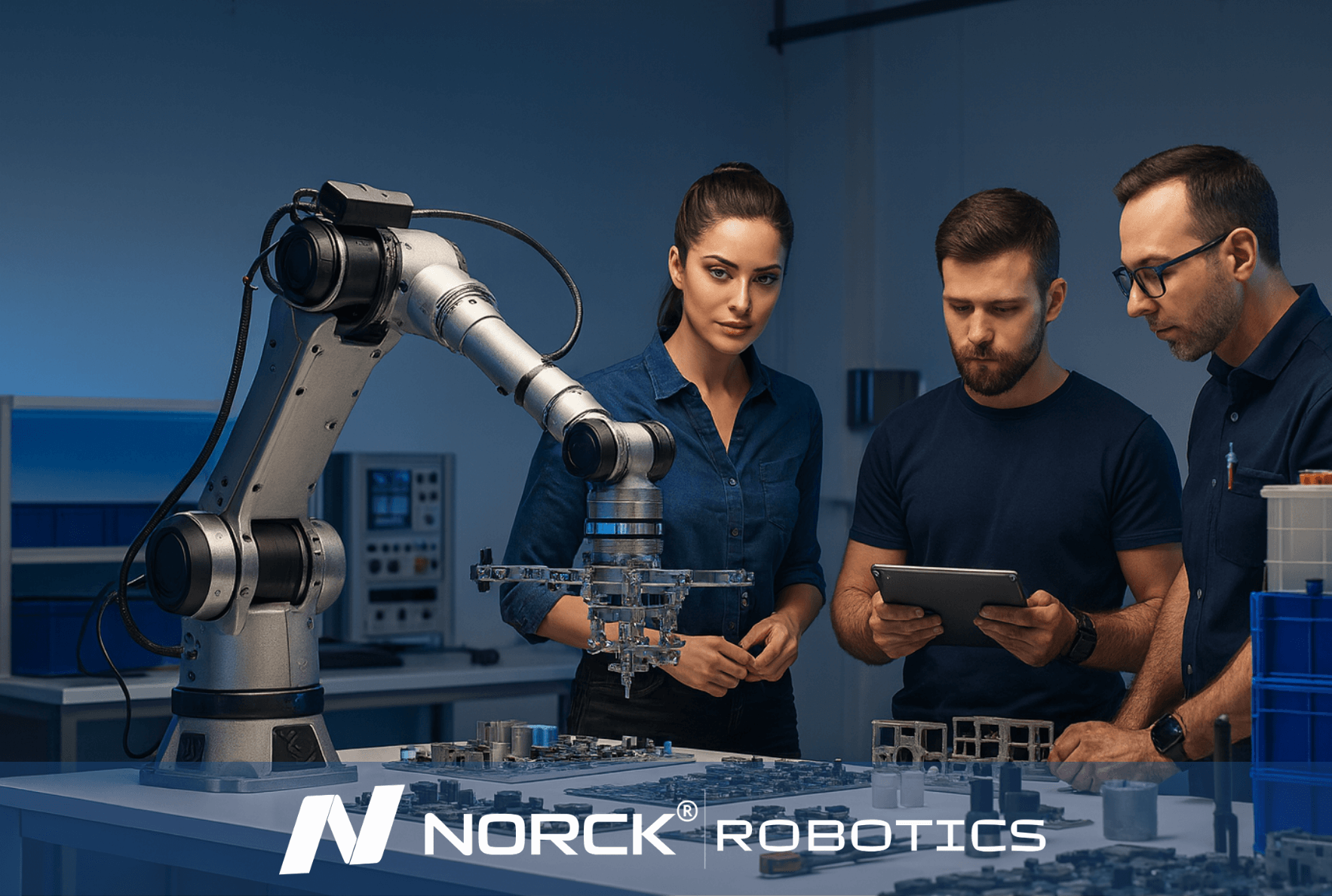
Norck Robotics advances digital automation by developing custom-designed robot grippers, advanced vision systems, and innovative simulation software. With an AI-driven, data-centric approach, it enables smarter system design, optimal performance, and predictive maintenance solutions.
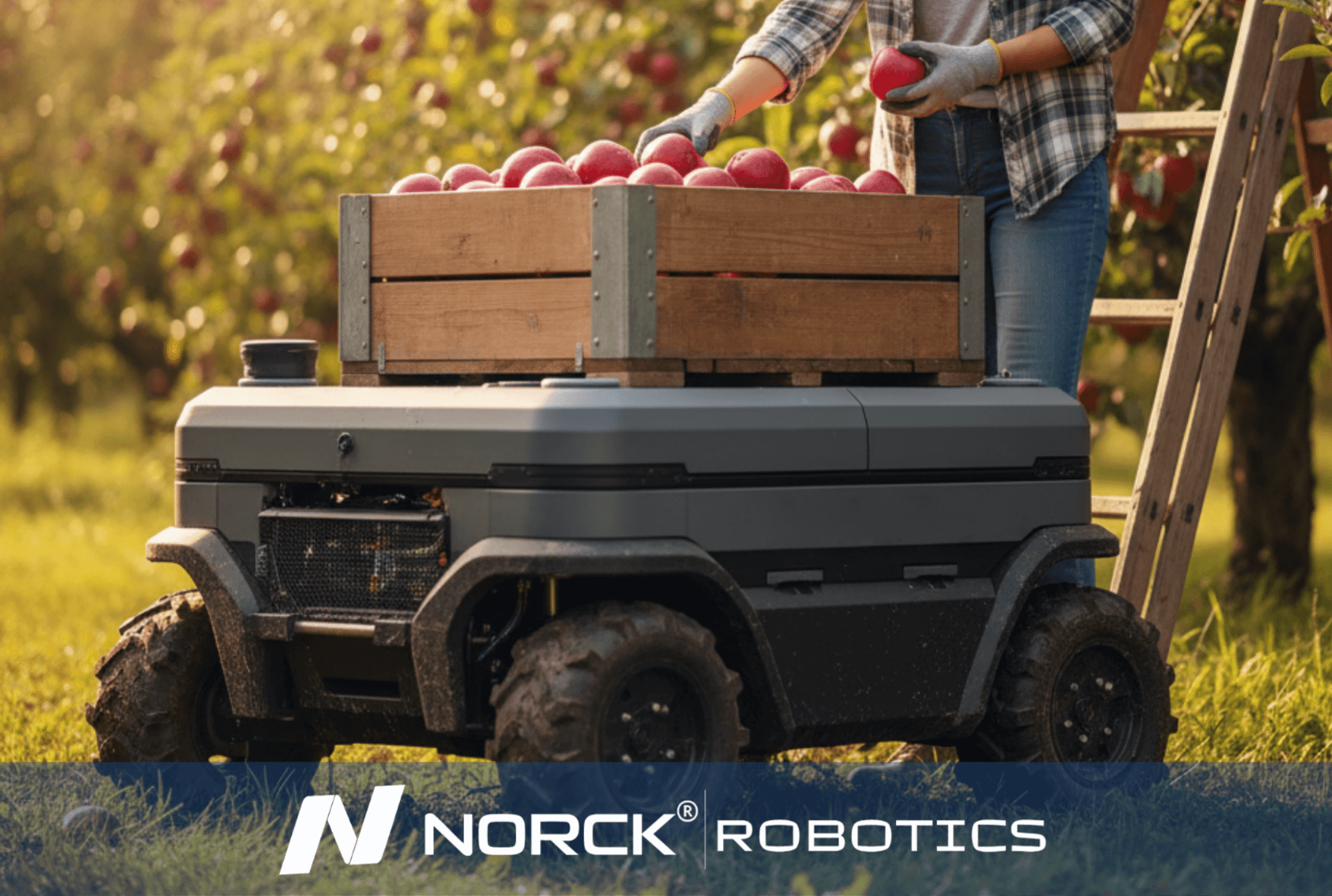
Norck Robotics encourages its partners to be carbon-neutral by reducing energy consumption and material waste through the efficiency of robotic automation, and prioritizes environmentally conscious suppliers.
Linear Guides and Rails come in different designs for performance needs. The basic ones are ball guides and roller guides, each with a set of merits to enter into the motion systems. Here is a narration:
Ball Guides
Ball Linear Guides and Rails are operating by means of recirculating ball from the rail into its block. It will suit applications that involve high-speed movement but moderate load capacity. Since these rolling balls reduce friction, it makes smooth and precise linear movement. Examples of these characteristics are seen in CNC machines, 3D printers, and automated assembly systems.
Roller Guides
Roller-type Linear Guides and Rails are similar to ball-type guides, except that it uses cylindrical rollers instead of balls. The larger contact surface makes them more suitable for high-load applications. Roller guides offer rigidity and are heavier in mechanical applications and tolerance.
Ball Guides are lower in noise and speed but higher in rigidity and load-carrying capacity. Depending on the needs of the application, implements used may vary.
Knowing the types of Linear Guide and Rail would lead to the system that could provide good motion control in terms of durability and accuracy in an industrial application.